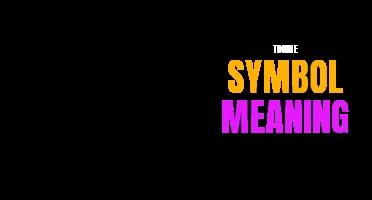
The sigma symbol, Σ, holds a multitude of meanings across various disciplines, ranging from mathematics and statistics to physics and chemistry. Derived from the Greek lettering system, this elegant symbol represents the concept of summation – the summing up of a series of values. In mathematics, it helps to simplify complex equations by succinctly indicating the sum of terms, while in science, it denotes the total or average of a set of measurements. Join me as we explore the diverse and fascinating world of the sigma symbol and unveil the intricate web of knowledge it weaves in different fields of study.
What You'll Learn
- What does the sigma symbol mean in mathematics?
- How is the sigma symbol used to represent a summation in mathematics?
- Can you provide an example of how the sigma symbol is used in a mathematical equation?
- Are there any other meanings or uses of the sigma symbol outside of mathematics?
- Are there any variations or different ways to write the sigma symbol?

What does the sigma symbol mean in mathematics?
The sigma symbol, denoted by the Greek letter Σ, is widely used in mathematics to represent the summation of a set of numbers or variables. It is used to indicate that we need to add up a series of values together.
In mathematics, summation is a common operation that involves adding up a sequence of numbers. The sigma symbol is used to compactly represent this operation. It works by taking the numbers or variables listed after the sigma symbol, and adding them up according to the specified pattern.
For example, consider the following expression: Σn, where n ranges from 1 to 5. This means that we need to add up all the numbers starting from 1 and ending at 5. The result would be 1+2+3+4+5= 15.
The sigma symbol can also include an expression or equation as a subscript. This indicates the pattern or rule that needs to be followed when summing up the series. For instance, Σn^2, where n ranges from 1 to 4, means that we need to square each number from 1 to 4 and then add them up. The result would be 1^2+2^2+3^2+4^2= 30.
In addition to the regular summation, the sigma symbol can be modified with additional symbols or conditions to represent more specific operations. Some of the commonly used modifications include:
- Σn=1^5: This indicates that the summation starts from n=1 and goes up to n=5.
- Σn=1∞: This indicates that the summation starts from n=1 and goes on indefinitely.
- Σn=1^5 2n: This represents the sum of 2n from n=1 to n=5. So the result would be 2(1)+2(2)+2(3)+2(4)+2(5)= 30.
The sigma symbol is not limited to just numbers; it can also be used with variables or expressions. For example, Σx^2, where x ranges from 1 to 3, means that we need to square each value of x (1, 2, and 3) and then add them up. The result would be 1^2+2^2+3^2= 14.
In conclusion, the sigma symbol in mathematics represents the summation of a set of numbers or variables. It is a compact way of indicating that we need to add up a series of values together. The symbol can be modified with subscripts and additional conditions to specify the pattern or rule to be followed while summation. It is a fundamental tool used in many branches of mathematics, including algebra, calculus, and statistics.

How is the sigma symbol used to represent a summation in mathematics?
The sigma symbol, denoted by the Greek letter Σ (sigma), is commonly used to represent a summation in mathematics. It is used to express the idea of adding up a series of terms in a concise and efficient manner.
The sigma symbol is typically followed by an expression or equation that describes the terms to be added. This expression is often written in terms of an index variable, which takes on different values as the summation is carried out. The index variable is represented below the sigma symbol, indicating its range or domain.
For example, consider the following equation:
Σ(i=1 to n) i
In this equation, the sigma symbol represents the summation operation. The index variable i starts at 1 and goes up to n, which represents the number of terms in the series. The expression to the right of the sigma symbol, in this case, is simply i, which means that we are adding up the sequence of consecutive numbers starting from 1 and going up to n. The resulting sum is the sum of all the numbers in the series.
To evaluate this summation, the value of i is substituted with each possible value in its range, and the resulting terms are added together. For example, if n is 5, the summation can be written as:
1 + 2 + 3 + 4 + 5
Which equals 15. Thus, the sigma symbol allows us to express this series in a compact and efficient way.
The index variable can also appear in the expression being summed. For example:
Σ(i=1 to n) i^2
In this case, we are adding up the squares of consecutive numbers from 1 to n. For n=3, the summation can be written as:
1^2 + 2^2 + 3^2
Which equals 14.
The sigma notation is widely used in mathematics, particularly in calculus and discrete mathematics, where summations are frequently encountered. It allows mathematicians to describe complicated series concisely, making it easier to analyze and manipulate them.
In addition to representing simple additive series, the sigma symbol can also be used to represent more complex summations. For example, it can represent double summations, where two index variables are used. In these cases, the summation is carried out for each possible combination of values for the two indices.
Overall, the sigma symbol is a powerful tool for expressing and evaluating summations in mathematics. It allows mathematicians to concisely represent series and make complex calculations more manageable. It is an essential notation for anyone studying or working in fields that involve summations, such as calculus, statistics, physics, and computer science.
The Symbolic Meaning of Pineapple: Exploring its Association with Fertility
You may want to see also

Can you provide an example of how the sigma symbol is used in a mathematical equation?
The sigma symbol, denoted by the Greek letter sigma (Σ), is commonly used in mathematical equations to indicate a sum or series. It allows mathematicians to express the sum of a set of numbers or terms in a concise and efficient manner. Let's take a look at an example of how the sigma symbol is used in a mathematical equation.
Consider the following sequence of numbers: 1, 2, 3, 4, 5. We want to find the sum of these numbers. Instead of explicitly writing out each number and adding them together, we can use the sigma symbol to express the sum in a more compact form.
The sigma symbol is followed by the index variable, which represents the current term in the sequence. In this case, we can use the index variable "i" to represent the term number. The lower limit of the index variable is placed below the sigma symbol (in this case, 1), and the upper limit is placed above the sigma symbol (in this case, 5). The expression to the right of the sigma symbol defines the term or function to be summed. In this case, we simply have the index variable, which represents the terms in the sequence.
Using the sigma symbol, the sum of the sequence can be written as:
Σ(i) = 1 + 2 + 3 + 4 + 5
In this equation, the index variable "i" takes on the values 1, 2, 3, 4, and 5, and each term (i) is added together to obtain the sum. Evaluating the equation, we find that the sum of the sequence is:
Σ(i) = 1 + 2 + 3 + 4 + 5 = 15
By using the sigma symbol, we were able to express the sum of the sequence with a concise and shorthand notation. This allows mathematicians to work efficiently with large sets of numbers or terms without having to write out each individual term.
The use of the sigma symbol extends beyond simple sequences. It can also be used for more complex mathematical expressions or series involving different functions or variables. For example, the sigma symbol can be used to calculate the sum of squares, cubes, or other mathematical operations.
In conclusion, the sigma symbol is a powerful tool in mathematics that allows for the concise representation of sums or series. By using the sigma symbol, mathematicians can express complicated mathematical equations in a simpler and more efficient manner. Its use allows for easier calculations and a deeper understanding of mathematical concepts.
The Mystical Meanings Behind the Horseshoe Symbol Revealed
You may want to see also

Are there any other meanings or uses of the sigma symbol outside of mathematics?
The sigma symbol, represented as the uppercase Greek letter Σ, is most commonly known for its use in mathematics to denote the summation or sum of a series of numbers. However, the sigma symbol has also found its way into other fields of study, as well as various areas of everyday life. Let's explore some of these alternative meanings and uses of the sigma symbol.
In statistics, the sigma symbol is used to represent the standard deviation of a population or a sample. The standard deviation is a measure of the spread or dispersion of a set of data points. It helps to quantify how much the individual data points differ from the mean (average) value. The sigma symbol is used to calculate and express this statistical measure.
Furthermore, in physics and engineering, the sigma symbol is often employed to denote cross-sectional area. Cross-sectional area refers to the area of a two-dimensional shape that is obtained by slicing through a three-dimensional object. It is commonly used in the context of calculating stress and strain in materials.
Another important usage of the sigma symbol can be found in chemistry. In this field, the symbol is used to represent a summation that accounts for the multiple possible states or forms of a particular compound. It is particularly relevant when dealing with equilibrium constants and thermodynamic calculations.
Moving away from the realm of academia, the sigma symbol has made its way into popular culture as well. One notable area is branding and logos. Several companies, organizations, and products have incorporated the sigma symbol into their logos to represent qualities such as precision, excellence, or innovation. These brands aim to associate themselves with values typically associated with the mathematical concept of summation and the idea of achieving a collective result.
Additionally, the sigma symbol has also been adopted by secret societies and fraternities. It is often used as an identifying symbol and serves to differentiate members of a select group or organization. The use of the sigma symbol in this context conveys a sense of exclusivity and belonging.
In conclusion, although the sigma symbol is predominantly associated with mathematics, its application extends beyond the realm of numbers. Its use in statistics, physics, chemistry, branding, and secret societies demonstrates the versatility and adaptability of this Greek letter in different fields of study and areas of everyday life.
Unraveling the Rich Symbolic Meaning of Pineapples
You may want to see also

Are there any variations or different ways to write the sigma symbol?
The sigma symbol, also known as the Greek letter Σ, is commonly used in mathematics and science to represent a sum of a series. It is derived from the Greek word "summa," which means "sum." While the sigma symbol is the standard representation, there are different variations and ways to write it. In this article, we will explore some of these variations.
One of the most common variations of the sigma symbol is the lowercase sigma, which is represented by the Greek letter σ. This variation is often used to denote the standard deviation in statistics and is commonly seen in formulas and equations.
Another variation of the sigma symbol is the cursive sigma, which is often used in handwritten mathematics. The cursive sigma looks similar to the standard uppercase sigma but has a more rounded and flowing appearance. This variation is often used in mathematical proofs and handwritten notes.
In addition to the standard sigma symbol, there are also different ways to write the summation notation, which utilizes the sigma symbol. The basic summation notation is written as Σ, followed by the starting value of the index variable, followed by the ending value of the index variable, and finally the expression to be summed. For example, the summation notation for adding all the numbers from 1 to 10 would be expressed as Σn=1^10 n.
There are also variations of the summation notation that use different symbols or subscript and superscript notations. For instance, the uppercase sigma symbol may be replaced with the capital letter "E" in some contexts, especially in statistics. The subscript and superscript notations can be used to indicate the starting and ending values of the index variable. For example, the summation notation for adding all the numbers from 1 to 10 can also be written as Σn=1^10 n or Σn=1 n=10 n.
Overall, the sigma symbol is a versatile mathematical symbol that represents a sum of a series. While the standard sigma symbol is the most common representation, there are variations such as the lowercase sigma and the cursive sigma. Additionally, there are different ways to write the summation notation, using subscript and superscript notations or alternative symbols. These variations and different ways of writing the sigma symbol provide flexibility in mathematical notation and allow for clarity and ease of understanding in mathematical expressions.
Decoding the Mystery: Demystifying Range Rover Dashboard Symbols
You may want to see also
Frequently asked questions
The sigma symbol (Σ) in mathematics represents the sum of a series of numbers. It is often used in mathematical notation to indicate the sum of a set of values or terms. For example, if you have a series of numbers 1, 2, 3, 4, the sigma symbol can be used to express the sum of these numbers as Σ = 1 + 2 + 3 + 4.
In statistics, the sigma symbol (Σ) represents the standard deviation of a population or a sample. The standard deviation is a measure of the dispersion or spread of a set of data points around the mean. The sigma symbol is used in statistical formulas and equations to represent this concept.
In physics, the sigma symbol (Σ) can represent different concepts depending on the context. It is commonly used to denote the summation of forces or quantities in equations related to mechanics or Newton's laws. It can also represent the cross-sectional area of a material or the conductivity of a substance in electrical circuits.
In chemistry, the sigma symbol (Σ) is often used to represent a type of covalent bond called a sigma bond. Sigma bonds are formed when two atomic orbitals overlap in a head-on manner, allowing for the sharing of electrons between atoms. The sigma symbol is used in structural formulas and molecular diagrams to indicate the presence of these bonds.
In engineering, the sigma symbol (Σ) often represents stress or strength. It can be used to denote the stress on a material or component, or to indicate the strength of a material under different conditions. The sigma symbol is commonly used in engineering calculations and formulas related to structural analysis, mechanics, and materials science.







